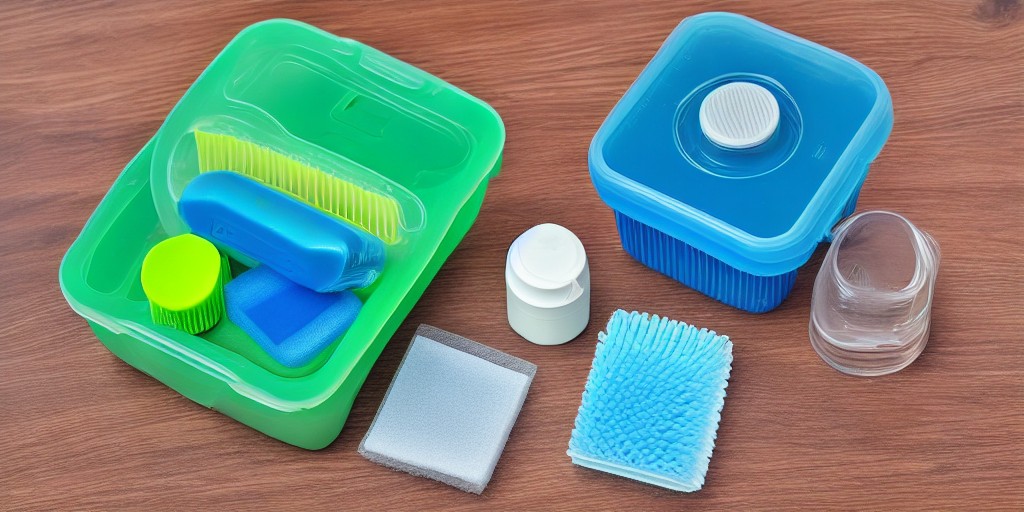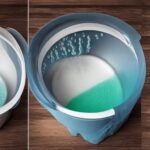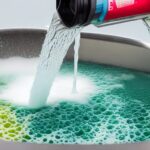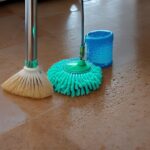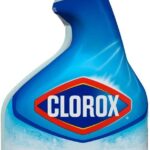When it comes to cleaning, bleach is one of the most effective disinfectants on the market. Bleach products like Clorox are widely used in households and businesses for their strong cleaning properties. However, some people wonder whether using Clorox can damage plastic surfaces. In this article, I will explore this topic and provide you with all the information you need to know.
What is Clorox?
Clorox is a brand of bleach product that is commonly used for cleaning and disinfecting. It contains sodium hypochlorite, which is a powerful disinfectant that kills bacteria and viruses. Clorox is available in various forms, including liquid, spray, and wipes.
How does Clorox work?
Clorox works by releasing chlorine, which is a powerful oxidizing agent that breaks down organic matter and destroys bacteria and viruses. When Clorox comes into contact with water, it releases chlorine gas, which is highly reactive and can cause skin irritation and respiratory problems if inhaled. Therefore, it is important to use Clorox in a well-ventilated area and avoid direct contact with the skin and eyes.
Is Clorox safe for plastic?
Clorox can be safe for plastic, but it depends on the type of plastic and the concentration of the bleach solution. Some plastics are more resistant to bleach than others and can withstand higher concentrations of Clorox without damage. However, if the plastic is exposed to Clorox for too long or at too high a concentration, it can become discolored, brittle, or even melt.
Types of plastic that can be damaged by Clorox
Not all plastic is created equal, and some types of plastic are more susceptible to damage from Clorox than others. The following types of plastic should be avoided when using Clorox:
- Acrylic: Clorox can cause acrylic to become discolored, cracked, or melted.
2. Polycarbonate: Clorox can cause polycarbonate to become discolored, brittle, or even crack.
3. ABS plastic: Clorox can cause ABS plastic to become discolored, cracked, or even dissolve.
4. Nylon: Clorox can cause nylon to become discolored and weakened.
How to safely clean plastic with Clorox.
To safely clean plastic with Clorox, follow these tips:
Check the label: Make sure the plastic is labeled as “bleach-resistant” or “safe for use with bleach.”
Dilute the solution: Mix the bleach solution according to the instructions on the bottle, and use a lower concentration for more delicate plastics.
Test a small area: Before cleaning the entire surface, test a small, inconspicuous area to make sure the plastic is not damaged by the bleach solution.
Rinse thoroughly: After cleaning, rinse the plastic thoroughly with water to remove any remaining bleach residue.
Alternatives to Clorox for cleaning plastic
If you’re concerned about using Clorox on plastic surfaces, there are several alternatives you can try:
Vinegar: White vinegar is a natural disinfectant that can be used to clean plastic surfaces.
Hydrogen peroxide: Hydrogen peroxide is a mild bleach alternative that can be used to disinfect plastic surfaces.
Baking soda: Baking soda is a gentle abrasive that can be used to clean plastic surfaces without damaging them. It can also help to neutralize odors.
Soap and water: Soap and water are always a safe and effective option for cleaning plastic surfaces.
Conclusion.
In conclusion, Clorox can be safe for plastic if used properly and on the right type of plastic. However, it is important to be cautious and follow the tips I have provided to avoid damage. If you’re still unsure about using Clorox on plastic surfaces, there are several alternative cleaning options available.
FAQs on Can Clorox Damage Plastic?
Can Clorox damage plastic water bottles?
It depends on the type of plastic. If the water bottle is made of polycarbonate or acrylic, it can become discolored or even crack if exposed to Clorox for too long or at too high a concentration.
Can Clorox bleach colored plastic?
Yes, Clorox can bleach colored plastic if it is not labeled as “bleach-resistant.”
How long should I leave Clorox on plastic surfaces?
It depends on the concentration of the bleach solution and the type of plastic. Follow the instructions on the bottle and never leave Clorox on plastic surfaces for more than 10 minutes.
Can I use Clorox to clean plastic toys?
It depends on the type of plastic. Most plastic toys are made of PVC, which can be damaged by Clorox. It’s best to use a mild soap and water solution to clean plastic toys.
Is Clorox safe for food containers?
Clorox is not recommended for use on food containers. Instead, use soap and water or a bleach-free disinfectant.
